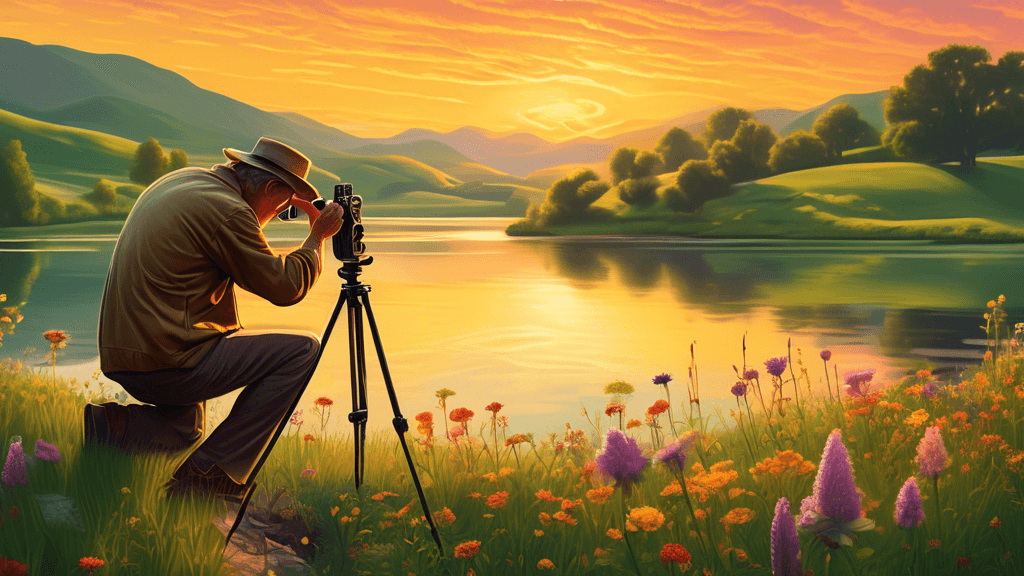
Mastering Landscape Photography: Tips and Techniques
Share
Landscape photography is not just about capturing spaciousness and the beauty of nature; it's a way to see the world through a lens of awe and consciousness. Whether you're a beginner or a seasoned photographer, improving your landscape photography skills can transform your images from good to breathtaking. But how do you elevate your landscape photos? What techniques can help you better capture the essence of the environment?
Understanding Your Environment
Before diving into technical aspects, it's vital to discuss the foundational element of all great landscape photography: understanding your environment. This involves more than just recognizing beautiful spots; it encompasses an awareness of light, weather patterns, and ecological characteristics. How does the angle of the sun affect the landscape at different times of the day? What are the predominant weather conditions, and how can they transform the landscape visually?
Key Techniques for Capturing Stunning Landscapes
To truly master landscape photography, several technical and creative techniques should be considered:
- The Golden Hours: Photograph during the golden hours — the first hour after sunrise and the last hour before sunset. This is when the light is soft, dynamic, and colorful, offering shadows and highlights that give landscapes a dream-like quality.
- Composition Rules: Apply the rule of thirds, leading lines, or the concept of foreground interest to add depth and interest to your photographs. A well-composed shot can direct the viewer's eye through the scene, making it more engaging.
- Use of Filters: Experiment with filters such as polarizers to enhance colors and reduce reflections, or neutral density filters to manage light in very bright conditions and allow for longer exposure times.
- Maximize Depth of Field: Most landscape photographs benefit from a greater depth of field. Use a smaller aperture (higher f-stop number) to keep more of your image in focus. This is particularly important when you want both the foreground and the background sharp.
- Experiment with Exposure: Learn to adjust your exposure settings based on the landscape's natural lighting. Bracketing exposures can also be useful to create a balanced image during post-processing.
Nature does not hurry, yet everything is accomplished, said by Lao Tzu, reminds us that great landscape photography also requires patience and persistence.
Post-Processing Techniques
Post-processing is an essential step in landscape photography. It allows photographers to enhance the raw beauty of their captures, adjust colors, contrast, and exposure, and correct minor issues:
- RAW Format: Shoot in RAW format to ensure that you capture as much data as possible. This makes it significantly easier to make substantial adjustments in post-processing.
- Editing Software: Tools like Adobe Lightroom and Photoshop are invaluable for making precise adjustments. Use these tools to tweak brightness, contrast, saturation, and sharpness.
- Blending Modes: For advanced post-processing, blending different exposures of the same landscape can help achieve a more dynamic range and detail in both shadows and highlights.
Environmental Awareness in Landscape Photography
In the pursuit of the perfect shot, it's crucial to practice responsible photography that respects the natural environment and contributes to its conservation. Always adhere to local guidelines and preserve the pristine conditions of the locations you photograph. Ansel Adams, a prominent landscape photographer and environmentalist, once said, It is horrifying that we have to fight our own government to save the environment. His words echo the importance of advocacy and mindfulness in photography practices today.
Conclusion
Mastering landscape photography requires an amalgamation of technical skills, creative vision, and environmental awareness. By understanding your surroundings, utilizing essential techniques, and processing your images thoughtfully, you can greatly enhance the impact of your landscape photography. Remember, the goal is to not just capture a scene, but to invoke an emotion and tell a story through the silent language of nature.
Ready to take your landscape photography to the next level? Step outside, explore with patience and reverence, and remember that every shot contributes to your growth as a photographer and as a steward of the planet.





